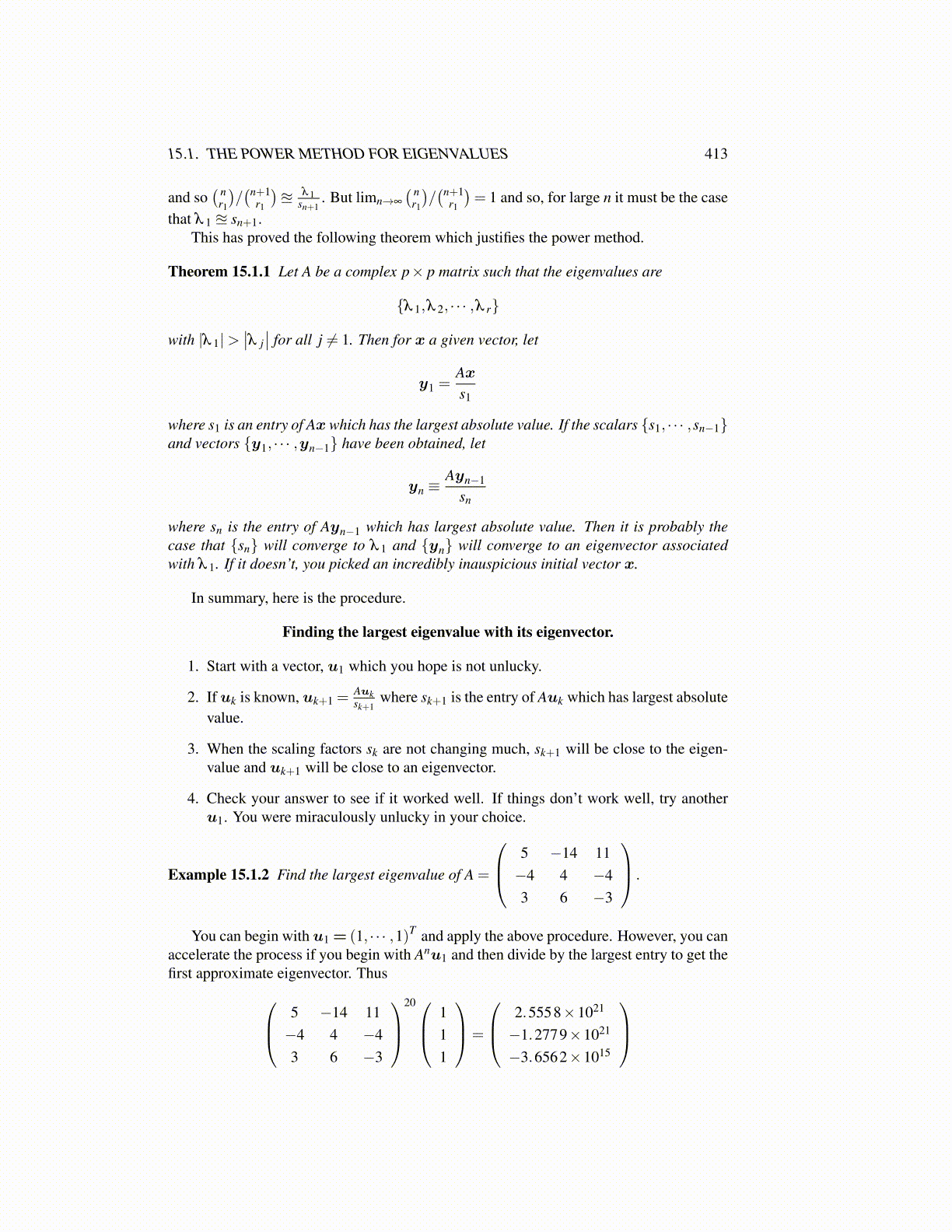
15.1. THE POWER METHOD FOR EIGENVALUES 413
and so( n
r1
)/(n+1
r1
)≊ λ 1
sn+1. But limn→∞
( nr1
)/(n+1
r1
)= 1 and so, for large n it must be the case
that λ 1 ≊ sn+1.This has proved the following theorem which justifies the power method.
Theorem 15.1.1 Let A be a complex p× p matrix such that the eigenvalues are
{λ 1,λ 2, · · · ,λ r}
with |λ 1|>∣∣λ j∣∣ for all j ̸= 1. Then for x a given vector, let
y1 =Axs1
where s1 is an entry of Ax which has the largest absolute value. If the scalars {s1, · · · ,sn−1}and vectors {y1, · · · ,yn−1} have been obtained, let
yn ≡Ayn−1
sn
where sn is the entry of Ayn−1 which has largest absolute value. Then it is probably thecase that {sn} will converge to λ 1 and {yn} will converge to an eigenvector associatedwith λ 1. If it doesn’t, you picked an incredibly inauspicious initial vector x.
In summary, here is the procedure.
Finding the largest eigenvalue with its eigenvector.
1. Start with a vector, u1 which you hope is not unlucky.
2. If uk is known, uk+1 =Auksk+1
where sk+1 is the entry of Auk which has largest absolutevalue.
3. When the scaling factors sk are not changing much, sk+1 will be close to the eigen-value and uk+1 will be close to an eigenvector.
4. Check your answer to see if it worked well. If things don’t work well, try anotheru1. You were miraculously unlucky in your choice.
Example 15.1.2 Find the largest eigenvalue of A =
5 −14 11−4 4 −43 6 −3
.
You can begin with u1 = (1, · · · ,1)T and apply the above procedure. However, you canaccelerate the process if you begin with Anu1 and then divide by the largest entry to get thefirst approximate eigenvector. Thus 5 −14 11
−4 4 −43 6 −3
20 1
11
=
2.5558×1021
−1.2779×1021
−3.6562×1015